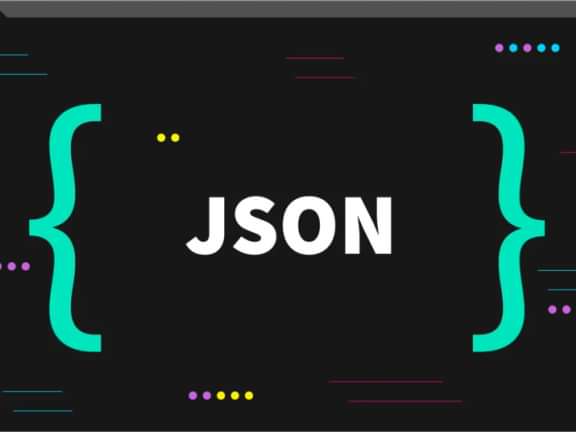Craft CMS vs Contentful: Headless Comparison for 2025
Building a website? Here's how Craft CMS and Contentful stack up

Headless to Headless matchup
When it comes to content management systems (CMS), the options available can be overwhelming. Two popular choices among web developers are Craft CMS and Contentful, but what sets these two platforms apart? In this post, we'll take a closer look at the features and capabilities of each CMS, and help you decide which one may be the best fit for your next project.
Craft CMS is a web-based content management system built on the PHP programming language. It's known for its flexibility and ease of use, making it a popular choice for small to medium-sized websites and web applications. Contentful, on the other hand, is a headless CMS that allows you to manage and deliver content across multiple channels and devices using its API.
Both platforms offer a wide range of features, but they have different approaches to content management. In this post, we'll compare their user interfaces, content modeling, and other functionality, and highlight the pros and cons of each. By the end, you'll have a better understanding of which platform is the best fit for your specific needs.
Flexibility
Contentful's API-first approach makes it easy to integrate with other tools and platforms. It allows developers to easily fetch and manage content, making it possible to display the same content across multiple channels and devices, such as web and mobile applications, as well as digital signage, voice assistants, and more. Contentful's APIs are well-documented and offer a wide range of functionalities, making it simple to integrate with other systems, such as e-commerce platforms, analytics tools, and more. The platform also offers a variety of official and community-built SDKs (Software Development Kits) for various programming languages, which simplify the integration process even further.
Craft CMS is known for its flexibility and ease of use, and this extends to customization as well. It allows for easy customization through plugins and templates. The system is built on the PHP programming language, and the use of templates give developers full control over the HTML and CSS of their site, allowing them to create a unique and customized experience that fits the specific needs of their project. Additionally, Craft CMS has a robust plugin ecosystem, with a wide range of official and third-party plugins available that can be easily installed to add additional functionalities to the system. Furthermore, it also offers a Twig templating engine that allows for powerful and efficient logic-based template creation which enhance the ease of customization.
Community
Contentful has a relatively large and active development community. The company provides extensive documentation and support for its APIs and SDKs, and also has an active forum for developers to ask questions and share tips. Additionally, Contentful has a "Developers" section on its website, which includes a number of tutorials, guides, and sample code to help developers get started. There is also a large number of third-party developers and agency building and maintaining the integrations and plugins.
Craft CMS also has a strong and active development community. The platform has a very active forum where developers can ask questions, share tips, and discuss features and improvements. The company also offers extensive documentation and support for its APIs, and there are a number of tutorials and guides available on the company's website as well. Additionally, the Craft community is known for its helpful and supportive attitude, making it a great platform for developers of all skill levels. And has a large number of third-party developers and agency that maintain and improve the plugin ecosystem.
Both Contentful and Craft have strong communities that provide resources and support for developers, but it may depend on your particular project, needs, and location which one would be more appropriate for you, it's good to check the active community in your area and check which one is more widely used.
Hosting
Contentful is a cloud-based, headless CMS that is fully managed by the company. This means that developers do not have to worry about server infrastructure or maintenance, and can instead focus on building and integrating with the platform. Contentful provides a globally distributed Content Delivery Network (CDN) to deliver content quickly and reliably. Contentful also provides access to its APIs via a global edge network, which enables developers to create low-latency, high-performance applications. Additionally, Contentful provides features such as versioning, rollbacks, and backups to ensure the data is safe and recoverable in case of any issues.
While this might work for some, limited needs solutions. There is some downfalls to consider when using Contenful's fully managed approach:
- Cost: One potential downside of using Contentful is that it can be more expensive than some other options, especially if you have a high volume of content or a large number of content editors.
- Limited control over server infrastructure: Because Contentful is fully managed by the company, you don't have as much control over the underlying server infrastructure as you would with a self-hosted solution. This can make it more difficult to customize the platform to fit your specific needs, or to troubleshoot issues that may arise.
- Limited customization: With a fully managed hosting, you have limited options when it comes to customizing the platform, this is a trade-off for the ease and speed of deployment, but for organizations that have specific requirements or need to have a unique solution, may have to look for another option.
- Dependency on Contentful: Since Contentful is a headless CMS, it's important to keep in mind that your entire front-end setup depends on their service uptime and performance. A server outage or slow response times on the Contentful side can lead to your whole front-end being down or slow as well.
Craft CMS, on the other hand, can be self-hosted or hosted on a web hosting service. Self-hosting is a good option for organizations that want to maintain full control over their own servers and configurations, but it does require additional work to set up and manage the hosting environment. When self-hosting, you will be responsible for the security and uptime of the site, as well as configuring server, database, and web server software.
Hosted solutions providers can offer an easy and managed way to host your craft site, providing web hosting, database hosting, and regular backups as well as security and performance enhancements.
In summary, Contentful is a fully managed, cloud-based platform that eliminates the need for developers to manage server infrastructure, while Craft CMS can be self-hosted or hosted on a web hosting service. Depending on the size, complexity and budget of your project and organization, you can pick the one that best fits your needs.
Development Cost
While we discussed hosting costs for Contentful above, there is another cost associated with your project and that is the cost of actually building out your solution.
As a headless CMS, Contentful's development cost mainly comes from integrating the system with your application. Contentful has a well-documented and easy to use API, this, along with the various SDKs and sample code, can make the integration process relatively simple and straightforward, minimizing the development costs.
However, for complex integrations and customizations, the development cost may increase, and you may need to hire experienced developers or a development agency that specializes in Contentful integration.
The cost of development for Craft CMS will depend on the complexity of your project and the experience level of the developer or development team. For small and simple projects, the development cost may be relatively low, while for large and complex projects, it may be higher.
Craft CMS is built on the PHP programming language, so the development team should be familiar with the language and the framework. The use of templates allows developers to have full control over the HTML and CSS, allowing them to create a unique and customized experience that fits the specific needs of their project. And the Twig template engine allows for more powerful and efficient logic-based template creation.
In summary, the cost of development for Contentful and Craft CMS may vary depending on the complexity of the project, and the experience level of the development team. Both platforms are easy to integrate and customize, but for complex projects and customizations, Contentful may be more expensive. It's important to assess the development costs and plan accordingly before choosing the platform that best fits your project's needs.
Headless Horseman
Craft CMS can be used in a headless configuration, where the front-end of the website is separated from the back-end CMS. This means that the CMS is used only for content management and API delivery, while the front-end is built using a different technology stack.
In a headless setup, Craft CMS can be used to manage and deliver content through its built-in API endpoints, which can be accessed using GraphQL or the Element API. This allows front-end developers to retrieve content from the CMS using JavaScript and build the website using a JavaScript framework such as React or Vue.js.
It's worth noting that Craft CMS's powerful templating system can be still used to build full-stack site as well. Headless is a more modern approach, but not necessarily better than the traditional one, it just gives more options to adapt on a project's needs.
Contentful is ONLY headless, meaning you'll need to bring your own front end to the party.
One potential issue with using Contentful in a headless configuration is the lack of flexibility in terms of content modeling. In Contentful, the content model is defined using a predefined set of fields and data types, which may not always match the requirements of a headless implementation. Additionally, Contentful's built-in templating system is tied to its web app, if you use it in headless mode, you'll need to handle all the rendering in your front-end.
Another thing that needs to be considered when it comes to headless implementation with Contentful is the query capabilities. While Contentful has a GraphQL API, it may not be as robust as that of other headless CMSs, which can lead to more complex and less efficient queries.
That being said, Contentful still excels in some areas, for example, its role-based access control system or its web app capabilities can be an excellent fit for a project with different stakeholders.
It's important to remember that headless is not a one-size-fits-all solution, the best approach to any project will depend on the specific requirements and constraints.
Would you like to know more?
At BrillianceNW, we specialize in providing expert assistance with Contentful and Craft CMS. If you're looking to improve your website or digital experience and need help from an experienced team, we encourage you to reach out to us. Our team has extensive experience working with both Contentful and Craft CMS, and we're ready to help you achieve your goals. Whether you're looking to implement a new website, migrate content, troubleshoot issues, or improve your existing website, we're here to help. We would be more than happy to hear from you, so don't hesitate to contact us!
Continue reading.
The Element API plugin is a very powerful tool that you can use for quickly exposing your data structures to an external source.
Read moreA brief introduction to consensus mechanisms and why proof of stake is the right move for Ethereum.
Read moreLet's chat about your project
Portland, OR 97215



